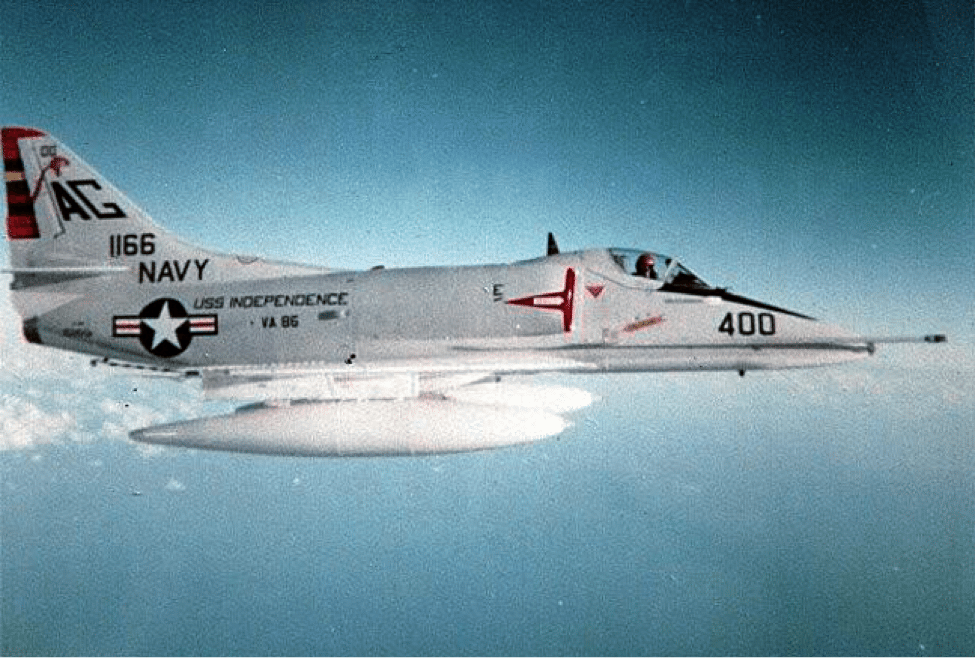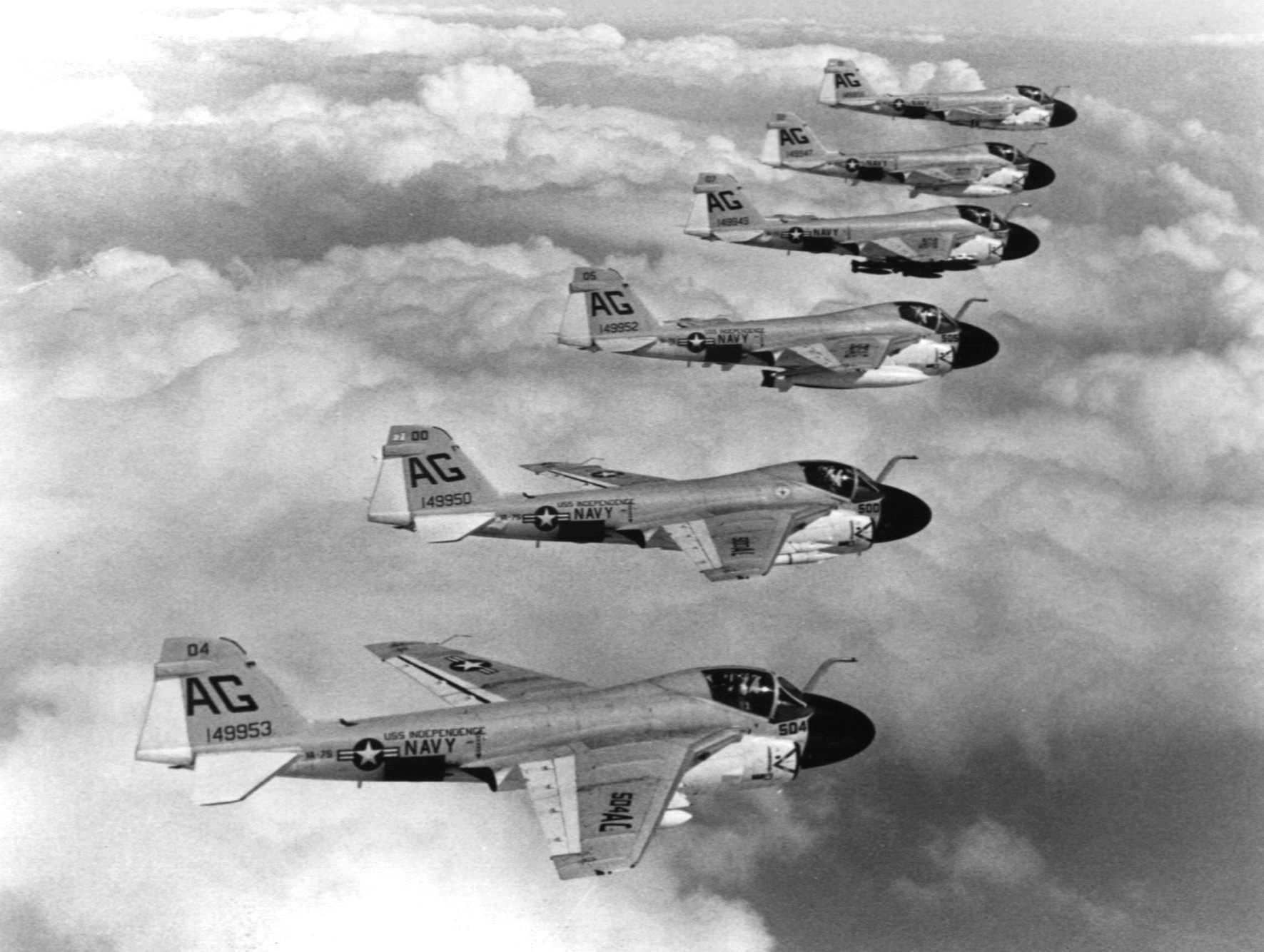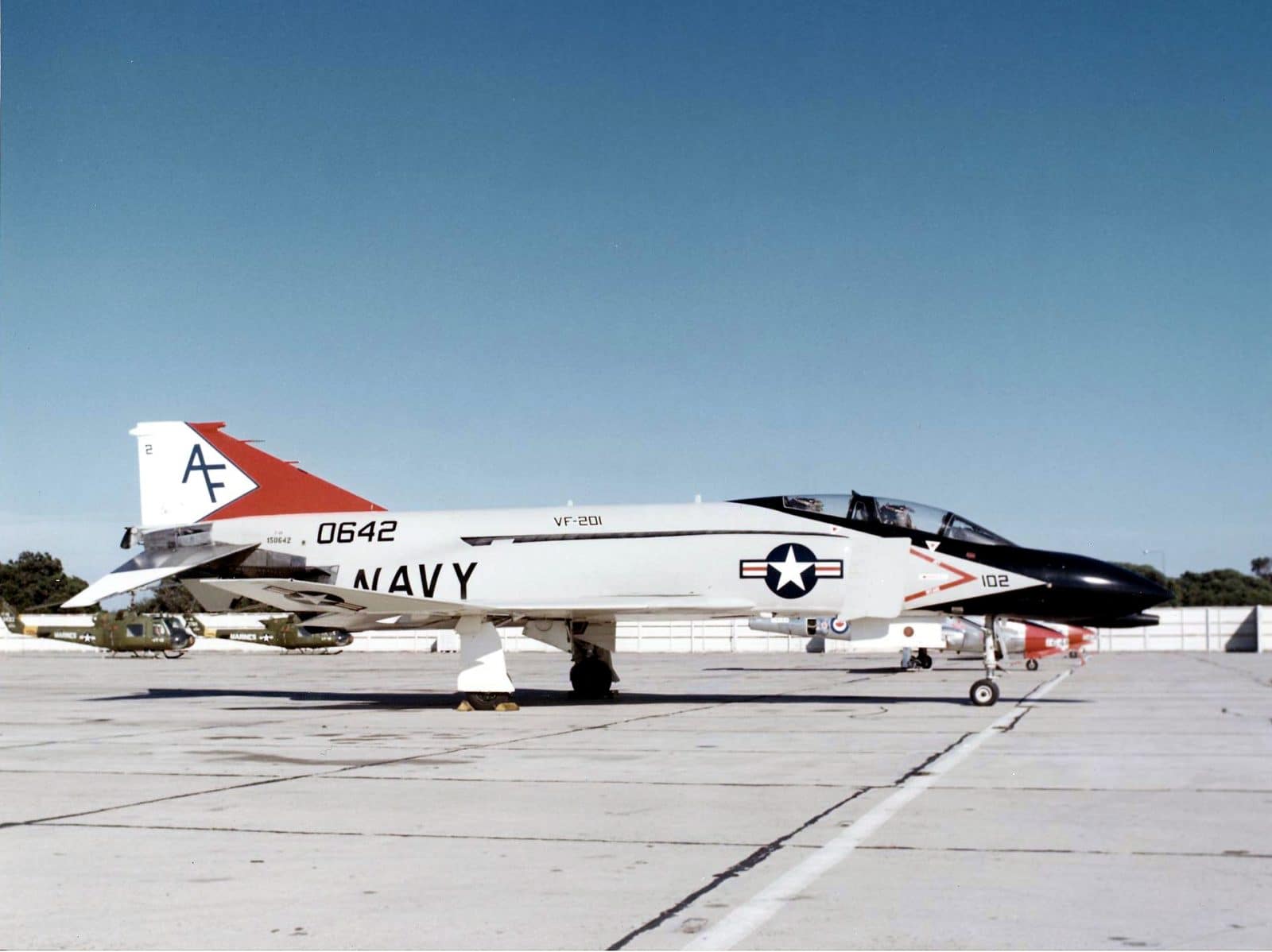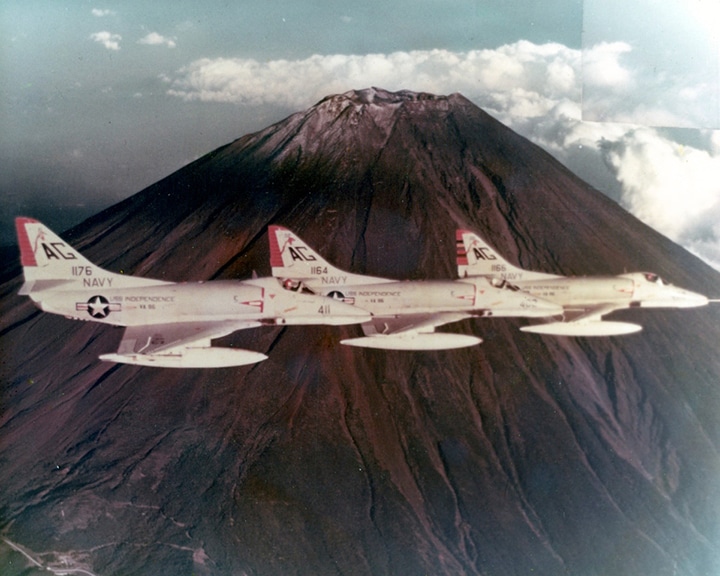BW: So you went through the VA training pipeline and essentially straight to combat in Viet Nam. What was the hairiest combat mission you ever flew?

YP: Probably an Alpha Strike in my A-4E against the Cao Nung bridge along the railroad from Hanoi to China. We had lots of missiles lofted into us, down low at 3500 feet as well as at the TARCAP (Target Combat Air Patrol) at altitude. It was a new thing, and it completely disrupted the group as we dodged missiles and each other. Fortunately, this happened around a small lake that was close to the IP (Initial Point), so things started sorting out. I saw two VA-75 Sunday Punchers A-6As start their pop-up maneuver, and I followed them. Unfortunately, the Scooter didn’t have the same performance in the pop-up as the A-6As, and I think I was around 180 knots at the roll-in point- very much like a grape. Then as I made my run on the target and tried to pickle my ordnance I realized the 2000 pound bomb on my centerline station didn’t release. I headed for feet wet as low and fast as I could go, used the emergency T-handle to release the hung bomb on some trucks in a village. It wasn’t going to explode, but…

BW: What was the hairiest non-combat mission you ever flew?
YP: A night recovery, in a thunderstorm no less, in the Med. Big pitching deck, so the LSO used the manual meatball, which is controlled by himself. “The ball’s going off the mirror,” said YP in falsetto. “Roger, pitching deck, keep it coming.” The LSO was “Beaver” Wheat, who sounded like the head Beverly Hillbilly, but you knew when you heard his voice that everything was (probably) going to be all right. My landing grade that night: OK-3, a little fast. I didn’t die, after all. God Bless him!
BW: You flew just about everything in naval use during your service. Did you ever fly the Tomcat?
YP: No sir. My last Navy jet was the F-4N.

BW: Which was your favorite military aircraft to fly and why?
YP: That is a hard question. I got a lot of time in a very concentrated fashion In the A-4. You literally wore the airplane. It was hugely maneuverable and forgiving. I got a huge dose of arrogance from the experience. It took almost ten years to get an equivalent amount of time in the Crusader, which at first I got in a sporadic manner in some very old, worn out airplanes- some of which were flat-out dangerous. I also needed to learn how to fight with the Crusader, which was different than the tight-turning A-4. After the Pueblo Crisis fiasco in January 1968, the Navy pumped lots of money and new airplanes into the Reserves. As a result, most of my Crusader time ended up being in the F-8H, which was a great airplane. My squadron (VF-201) deployed a great deal as an aggressor outfit, and that was huge fun. The Crusader absolutely came alive when flown fast as it should be flown, and that was a joy. So really a toss-up between the A-4 and the F-8.

BW: What was your call sign?
YP: RALPH. No, I chose it, not tagged on me for some inopportune upchucking. It was my dog’s name and I thought it sounded good. See, there once was an Indian warrior named “young man afraid of his horses,” It wasn’t because HE was afraid of his horses, but because his enemies would be afraid of them when they saw them. All of which meant that if you were going flying with me you were likely destined to ralph!
BW: What were your favorite call signs of other aviators?
YP: In VF-201, we had a series of “Tanks.” Tank, Small Tank, Gross Tank, and Piss Tank. My favorite was a Crusader call sign awarded to a “frabbing” new guy in an all pilot’s meeting in the ready room. The incautious young man stood up and announced that he was tired of being called “FNG.” The Operations Officer, who was running the meeting, immediately said “All right, from now on, you will be known as “The Bald-Headed Chicken Frabber.” Naval Aviators eat their young.
